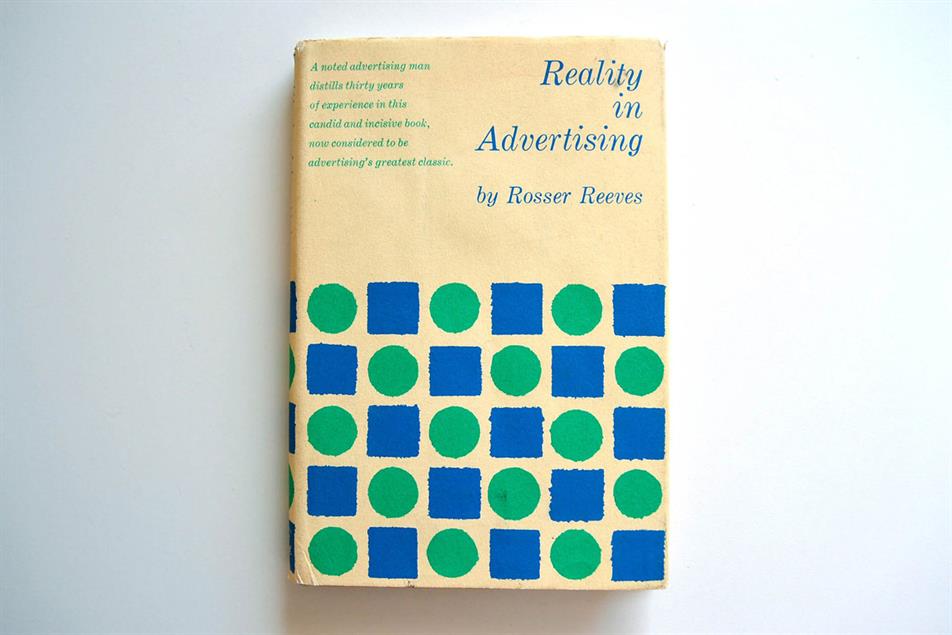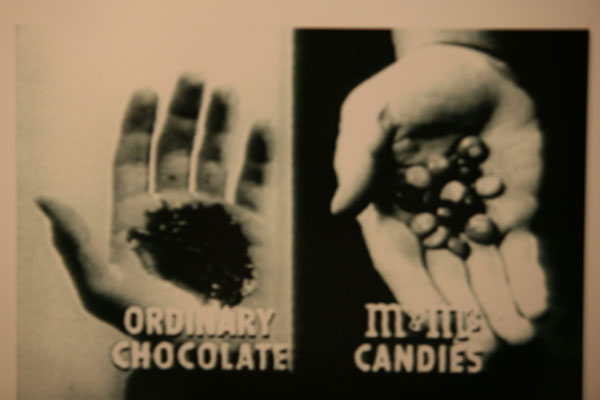Rosser Reeves was a pivotal figure in the advertising world whose contributions significantly shaped the mid-20th-century advertising industry and laid foundational principles that continue to influence marketing and branding today. Reeves is best known for developing the Unique Selling Proposition (USP) concept.
Reeves joined the Ted Bates & Co. advertising agency in 1940, eventually rising to vice chairman. Here, he honed and applied his theories on advertising effectiveness, leading campaigns that are remembered for their simplicity, directness, and measurable results. He also inspired much of the Don Draper character from Mad Men.
Unique Selling Proposition (USP)
Reeves is best known for developing the Unique Selling Proposition (USP) concept. He argued that successful advertising campaigns must highlight a unique aspect of the product that makes it superior to competitors and compels consumers to choose it over others. This idea was revolutionary at the time and contrasted with the more common practice of producing ads that focused on creativity and entertainment value without a clear, unique message about the product itself.
Its foundational premise is that successful advertising campaigns must clearly articulate a unique benefit to the consumer that competitors do not offer. This singular focus on differentiating a product or service based on a distinctive attribute or benefit has profound implications for how companies approach marketing and brand positioning. Analyzing why the USP concept worked at its inception and its continued relevance today offers insights into the enduring principles of effective marketing.
Reeves believed in the power of the USP to drive consumer choice by making a clear, compelling case for the product. This is a philosophy grounded in the idea that consumers make decisions based on discernible, rational benefits. The USP, therefore, must be demonstrably true and relevant to the consumer, offering a logical reason to choose one product over another.
Contrasting with the USP, brand image is about the emotional resonance a brand has with its audience. It encompasses the feelings, attitudes, and perceptions that consumers associate with a brand, developed over time through experiences and marketing communications. Brand image is not about claims regarding specific product features but about cultivating a broader, emotional relationship with the consumer.
Reeves acknowledged that while the USP appeals to the consumer’s rational side, brand image engages their emotions, aspirations, and values. This is a more intangible approach, aiming to connect with consumers on a deeper level, beyond the mere functional benefits of a product. Brand image is about how a brand fits into the consumer’s lifestyle, self-image, and worldview.
While Reeves’ distinction between the USP and brand image might seem to suggest two separate paths, modern marketing strategies often seek to integrate these aspects. Today’s marketers understand that consumers are influenced by both rational arguments (the clear benefits highlighted by the USP) and emotional connections (the feelings and associations evoked by the brand image).
The most successful brands are those that manage to articulate a clear USP while also cultivating a strong, positive brand image. They communicate not only what their product can do uniquely well but also how it makes consumers feel, aligning with their desires, values, and aspirations. This integrated approach ensures that brands can connect with consumers on multiple levels, making both rational and emotional appeals to influence decision-making.
Reeves’ insight into the dual nature of consumer engagement — through both claim and feeling — remains a fundamental principle in advertising and marketing. It underscores the complexity of consumer behavior and the need for brands to address both the logical and emotional dimensions of consumer choice in their strategies.
Historical Context and Initial Success
When Rosser Reeves first introduced the USP concept, the advertising industry was just starting to mature, with television becoming a dominant medium alongside radio and print. During this era, the market witnessed a proliferation of products, many of which appeared similar to consumers. The USP concept emerged as a solution to this clutter, providing a clear framework for distinguishing a product from its competitors in a crowded marketplace.
Reeves’ approach was revolutionary because it shifted the focus from the product itself to the benefit it offered to the consumer. This was a departure from the prevailing practice of promoting products based on features or price alone. The USP concept emphasized the importance of a unique benefit — a compelling reason for a consumer to choose one product over another. This clarity not only helped consumers make informed decisions but also allowed companies to focus their marketing efforts on highlighting their product’s distinctive advantages.
Famous Quotes
“I know that at least half of my advertising money is being wasted. My problem is – I do not know which half.” – Reeves
Why the USP Worked
Clarity and Simplicity: The USP provides a straightforward and memorable message that communicates the essence of what makes a product unique. This simplicity makes it easier for consumers to understand and remember the product, enhancing recall and recognition.
Differentiation: In competitive markets, differentiation is key to standing out. The USP framework forces businesses to identify and communicate what makes their offering unique, providing a clear reason for consumers to prefer their product over others.
Value Proposition: The USP goes beyond mere features to emphasize the benefit or value that the product delivers to the consumer. This focus on value resonates with consumers, driving purchase decisions.
Continued Relevance of the USP
The principles behind the USP remain as relevant today as they were in Reeves’ time, despite the profound changes in the marketing landscape. The explosion of digital media and the advent of social media have dramatically increased the number of touchpoints between brands and consumers, yet the challenge of differentiating one’s offering in a saturated market persists.
Consumer Decision-Making: Modern consumers are inundated with choices, making the clarity provided by a well-articulated USP more crucial than ever. A compelling USP can cut through the noise, guiding consumers towards a product.
Brand Identity and Consistency: The USP is integral to building a strong brand identity. It ensures consistency across various marketing channels, reinforcing the brand’s unique position in the consumer’s mind over time.
Adaptability and Innovation: Today’s fast-paced market dynamics require brands to continually innovate and adapt. The USP concept encourages brands to evolve their unique benefits in response to changing consumer needs and competitive landscapes, ensuring ongoing relevance.
Increased Focus on Consumer Benefits: Modern marketing emphasizes storytelling and consumer benefits. The USP aligns with this focus by compelling brands to articulate how their products improve consumers’ lives uniquely.
The USP concept’s enduring viability lies in its fundamental insight: that successful marketing is not just about what a product is, but what it does for the customer that no other product can. This focus on clear, compelling differentiation based on consumer benefits is timeless. As markets evolve and new channels emerge, the need to stand out based on unique value remains constant. Thus, the USP continues to be a vital tool in the marketer’s arsenal, guiding the development of marketing strategies that resonate with consumers and drive brand success.
The “Reality in Advertising” and Contributions to Marketing Theory
In 1961, Reeves published “Reality in Advertising,” where he elaborated on his advertising philosophy, including the USP, and presented case studies of successful campaigns. This book remains a seminal work in advertising literature, offering insights into Reeves’ emphasis on clarity, consistency, and the importance of a product’s unique features in advertising.
M&M’s and Colgate: Applying the USP
Reeves was instrumental in several iconic advertising campaigns that perfectly illustrated his USP concept. For instance, he created the M&M’s “Melts in your mouth, not in your hands” slogan, which succinctly communicated a unique benefit of the candy. Similarly, his work for Colgate toothpaste highlighted a specific feature (cleaner breath and fewer cavities) that differentiated it from competitors, proving the effectiveness of the USP in real-world advertising.
Legacy and Influence
Rosser Reeves’ influence extends beyond the campaigns he created. His insistence on measurable results and advertising that prioritized clear, consumer-relevant benefits over creativity for its own sake was somewhat controversial but undeniably impactful. He is credited with paving the way for a more analytical approach to advertising that values the proposition’s distinctiveness and directness to the consumer.
His work demonstrated that successful advertising does not just happen by accident; it is the result of careful planning, understanding of consumer behavior, and the ability to distill a product’s essence into a compelling, unique selling proposition. Reeves’ legacy is not just in the campaigns he led or the profits he generated for clients but in his enduring influence on the principles of advertising and marketing strategy.
Rosser Reeves passed away on January 24, 1984, but his contributions to the field of advertising remain relevant, informing strategies and guiding the development of marketing and branding theories well into the 21st century.
Concept At A Glance:
Concept: Unique Selling Proposition (USP)
Introduced by: Rosser Reeves in the 1940s.
Core Concept: The USP is a marketing concept that emphasizes the importance of a distinct and compelling reason why a product or service is superior to and different from those of the competition. It’s about identifying and communicating a feature that makes a brand or product uniquely valuable to consumers.
Reeves, an advertising executive, introduced the USP concept in the mid-20th century, and it was detailed in his book “Reality in Advertising” published in 1961. While not a “brand model” in the contemporary sense, the USP concept laid the groundwork for future brand positioning and differentiation strategies by stressing the importance of a clear, distinct message that sets a brand apart in the marketplace.
This principle has influenced numerous brand models and marketing strategies, making it a foundational element in the development of branding as a discipline. Its focus on differentiation, a core aspect of modern branding, underscores its significance and makes the USP concept a precursor to more complex brand models that followed.




